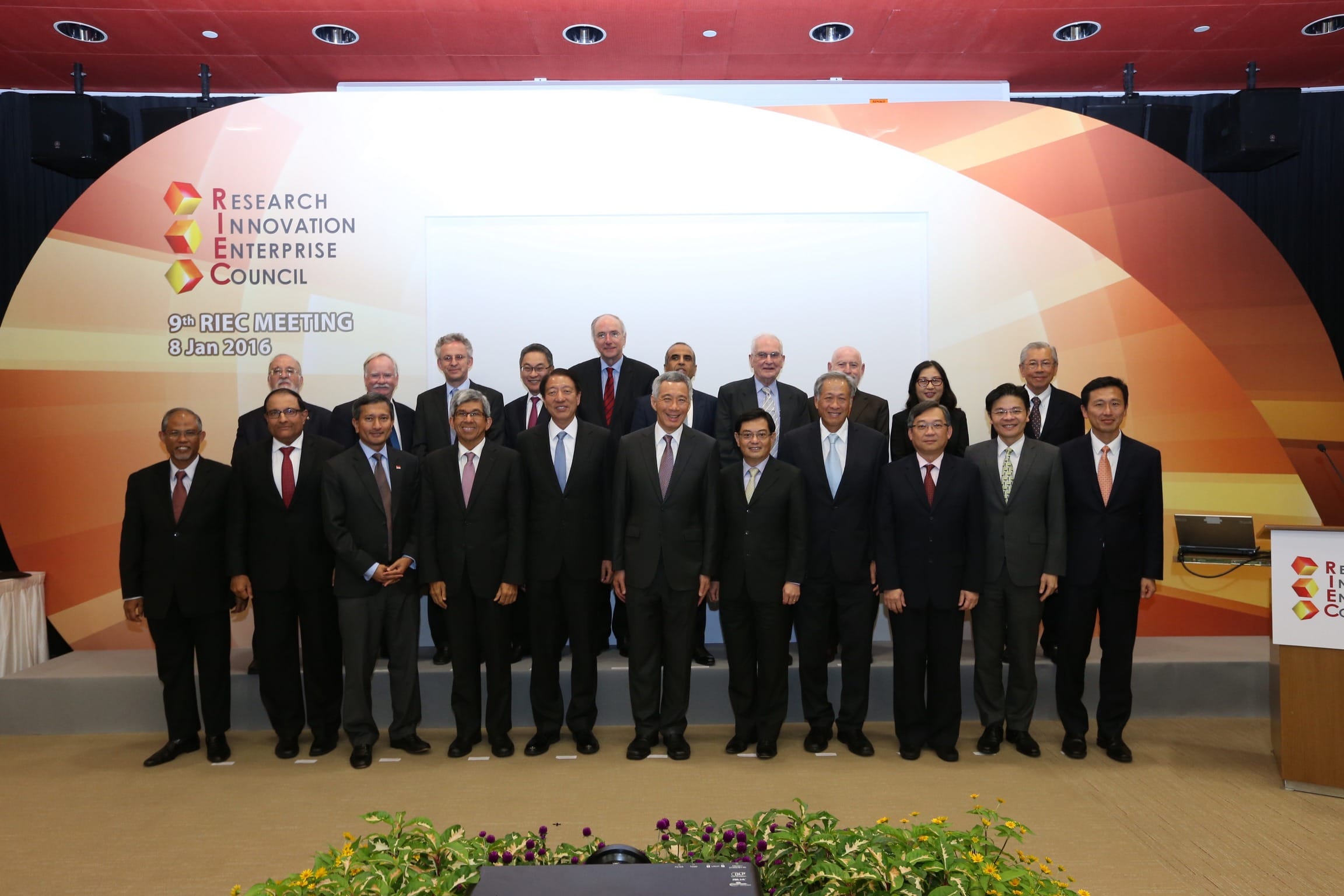PM Lee Hsien Loong at the Research, Innovation and Enterprise Council (RIEC) Press Conference (Jan 2016)
SM Lee Hsien Loong
Science and technology
8 January 2016
Remarks by Prime Minister Lee Hsien Loong at the Research, Innovation and Enterprise Council (RIEC) press conference on 8 January 2016.
This article has been migrated from an earlier version of the site and may display formatting inconsistencies.

Thank you for coming to this RIEC press conference. We have had a fruitful and a very lively meeting. We reviewed the Research, Innovation and Enterprise (RIE) 2015 Plan, which is a five-year plan which we completed last year. We firmed up our plans for the next five years, which is the RIE 2020 Plan.
We have made good progress. Our post-secondary institutions – the ITEs, the polys and the universities – have done well. Their research standing has gone up and they have also produced students who are well regarded and in demand from the industry. A*STAR now has 20 research institutes in many different fields and in different parts of the research and development chain, from fundamental to applied research. Our population of research scientists and engineers and PhD students has steadily increased. Linkages between public and private research have also been strengthened. We have launched initiatives, like the Keppel-NUS Corporate Lab and a joint laboratory between the Institute of Microelectronics and Advanced Semiconductor.
All these R&D and innovation and enterprise initiatives have benefitted our workers and our businesses. We have been able to attract leading multinational corporation (MNCs) and eminent foreign universities to establish R&D centres here and to do other high value-added activities here too, which has created new jobs and opportunities for Singaporeans. At the same time, because of the research and innovation which we have been doing, we have been able to give our local small and medium enterprises (SMEs) and our companies a leg-up, helping them to create new products and services and to expand their business opportunities. It has also helped us as a country to overcome our constraints, for example, with water technologies.
RIE will continue to be important to secure our future. It contributes significantly to the economy and creates opportunities and jobs. It supports national initiatives like the Smart Nation, SkillsFuture or the studies we are doing under the Committee for the Future Economy. It helps our workers to thrive amidst technological changes and globalization. It can also improve the health of our population, especially enabling our seniors to live better and healthier lives, and it can transform our urban landscape to make it more liveable and sustainable. Therefore, for the RIE 2020 Plan, we are committing $19 billion. There are more details in the Budget, but the essence of it is that we are going to be spending or allocating 18 per cent more than the previous plan and the spending will be about one per cent of GDP. That is more than the UK and comparable to the US and also to public spending on R&D in other small research-intensive economies.
In the RIE 2020 Plan, we are making four major shifts to capture more value from our investments and research, basically to make the research more effective and to get more results from them.
First, we are encouraging multidisciplinary collaboration across agencies in four identified domains based on our needs – Advanced Manufacturing and Engineering, Health and Biomedical Sciences, Services and the Digital Economy and also Urban Solutions and Sustainability.
Second, we are making more public R&D funding open to competition, requiring competition to bid for the money to make sure that we fund the best ideas and the most deserving needs. In fact, in the previous plan, only 20 per cent of the money was open for competition, but in this plan 40 per cent of the money will be open and have to be competed for.
Third, we are doing more to align research in public institutions with what the industry needs and dedicating more funds to public-private collaborations and also increasing start-ups grants to Singapore enterprises to innovate and adopt new technologies.
Finally, we are optimising our manpower. This means developing manpower where our national and industry needs are highest and getting more of our Masters and PhD students to be trained in the industry, for example, in engineering PhD programmes.
To drive the RIE 2020, we will need good people, both Singaporeans as well as foreign talent. We will need to train our young people to encourage them and interest them in science and technology and give them the sense that, indeed, it is possible to do exciting things in Singapore and change the world. We also need to attract talented Singaporeans who are abroad to come back home and to work in our scientific field. Today’s Straits Times, there is a very good story about three of them – Professor Andrew Lim, who is a computer scientist, Prof Chua Nam Hai, who is in biotechnology, and Dr Aaron Thean, who is an engineer and an inventor who has 50 patents to his name. At the same time, we have to be able to attract international talent and be open to talent in order to be able to deepen our talent pool, to create new knowledge and to enhance our technological expertise. If we can do that, then we can get the right mix of local and foreign talent. We have to make this a creative, a fertile, an innovative and enterprising environment.
Ultimately, R&D is about the spirit of can-do and the attitude that there are infinite possibilities waiting to be discovered or invented. Anything is possible provided we persevere and put our minds to it. We need that spirit, not just in science, technology to drive our researchers and scientists, but in Singapore, amongst all Singaporeans, so that we can build a better future for ourselves and our children.
Explore related topics
